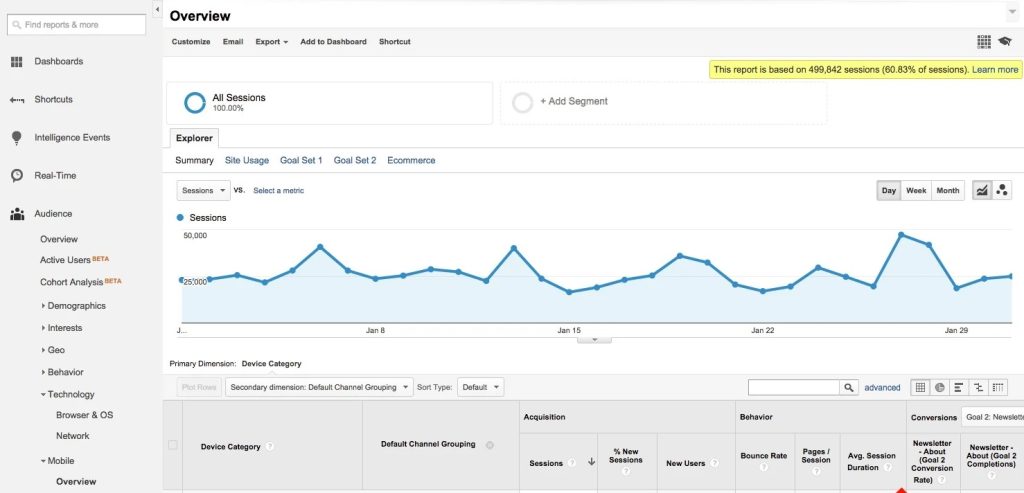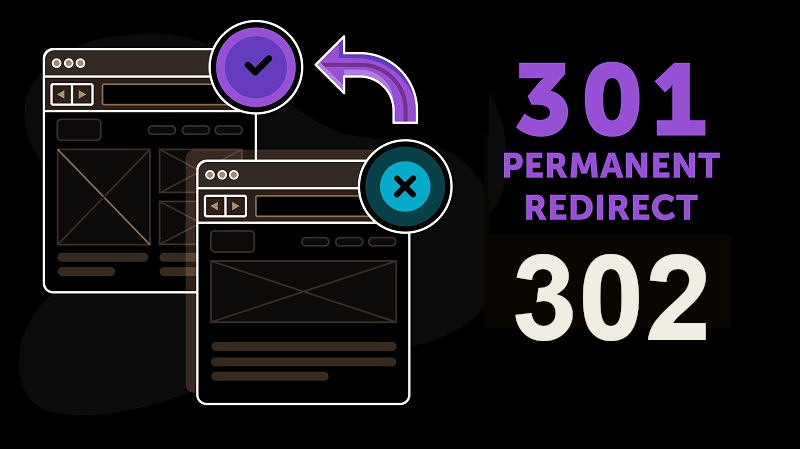Difference between 301 and 302 redirect
In the intricate tapestry of website management and Search Engine Optimization (SEO), the choices we make often reverberate through the digital landscape. Among these choices, the utilization of redirections holds a special place, with the 301 and 302 redirections emerging as prominent players. This essay embarks on an exploratory journey to dissect the fundamental differences between these two redirection methods, shedding light on their unique characteristics and providing insights into when each is most fitting.Here we will discussed about various benefits,problem & difference between 301 and 302 redirect.
Demystifying 301 Redirection
At its core, a 301 redirection, colloquially known as a “permanent redirection,” orchestrates the seamless transfer of a webpage’s URL to a new destination. More than a mere change in address, this redirection signals to search engines that the original URL has undergone a permanent transformation, resulting in the transference of the SEO equity, authority, and ranking from the former to the latter.
The Dynamics of 302 Redirection
In contrast, a 302 redirection—often referred to as a “temporary redirection”—functions as a transient guide, directing users and search engines to an alternate URL. Unlike its permanent counterpart, a 302 redirection implies that the original URL is likely to be reinstated at a later juncture, thereby maintaining its intrinsic SEO value.
Diving Deeper: The Nuances
- Permanent vs. Temporary Shifts:
- 301 Redirection: Suited for permanent changes, such as domain migrations or content reorganizations that are intended to endure over time.
- 302 Redirection: Ideal for temporary alterations, such as seasonal promotions or A/B testing, where the original URL’s SEO significance remains intact.
- SEO Implications:
- 301 Redirection: Effortlessly transfers SEO authority and ranking to the new URL, contributing to sustained organic traffic and search engine prominence.
- 302 Redirection: Preserves the original URL’s SEO value, making it a judicious choice for short-term modifications without jeopardizing long-term SEO efforts.
- User Experience:
- 301 Redirection: Enhances user experience by seamlessly guiding them to the new content, minimizing disruptions and reducing bounce rates.
- 302 Redirection: Provides a temporary detour while allowing users to return to the original content, ensuring a consistent user journey.

- Canonicalization:
- 301 Redirection: Facilitates canonicalization by consolidating duplicate content under a single URL, averting potential SEO challenges arising from duplicity.
- 302 Redirection: Preserves the original content’s canonical status during temporary shifts, preventing confusion in search engine indexing.
Real-World Applications of 301 and 302
- E-Commerce Dynamics:
- Leveraging 301 Redirection: When an online store permanently moves to a new domain, a 301 redirection safeguards SEO rankings and guides customers seamlessly to the new site.
- Harnessing 302 Redirection: Temporary offers or limited-time deals can be directed to specific URLs using 302 redirections, ensuring a time-bound promotion without affecting the main site’s SEO integrity.
- Website Revamps:
- Employing 301 Redirection: During a comprehensive website overhaul, utilizing 301 redirections guarantees a smooth transition to the revamped site while preserving SEO authority.
- Opting for 302 Redirection: When experimenting with design changes or content layouts, a 302 redirection allows for testing without permanent alterations to SEO ranking.
In the intricate web of website management and SEO, the choice between 301 and 302 redirections is a pivotal crossroads. It’s not a matter of one being inherently superior to the other, but rather a strategic decision guided by the intended permanence of the change and the preservation of SEO value.
The differentiation between 301 and 302 redirections extends beyond conceptual distinctions; it delves into the realm of technical implementation. The mechanics behind each redirection type are integral to their functionality and impact on SEO.

301 Redirection: A Permanent Transition
- Server Configurations: The implementation of a 301 redirection involves configuring server directives, such as using Apache’s mod_rewrite or Nginx’s rewrite module. This setup communicates to the server that the original URL has undergone a permanent change.
- HTTP Status Code: A critical aspect is the HTTP status code returned to browsers and search engines. The server must respond with an HTTP 301 Moved Permanently status code, signaling the enduring shift.
- Link Equity Transfer: One of the hallmarks of a 301 redirection is the transfer of link equity. Inbound links to the original URL seamlessly pass their authority to the new URL, bolstering the latter’s SEO standing.
302 Redirection: A Temporary Detour
- Server Directives: Similar to the 301 redirection, a 302 redirection requires server-side configuration. The server directives signify that the change is temporary, guiding both users and search engines accordingly.
- HTTP Status Code: A 302 redirection is denoted by an HTTP 302 Found or 302 Moved Temporarily status code. This code informs browsers and search engines that the redirection is momentary in nature.
- Temporary Nature: Unlike the 301 redirection’s authority transfer, the 302 redirection retains the original URL’s SEO value. This attribute is pivotal in scenarios where the alteration is ephemeral.
SEO Ecosystem: A Holistic Outlook
While the focus lies on the redirection itself, it’s essential to acknowledge that these mechanisms are interwoven within the broader fabric of SEO strategies.
- Content Quality: The effectiveness of both redirection types hinges on the quality of the redirected content. Compelling, relevant content ensures user engagement and sustains SEO rankings.
- User Experience (UX): User-centric design and intuitive navigation are crucial elements. Both 301 and 302 redirections should seamlessly guide users while enhancing UX.
- Mobile Optimization: The proliferation of mobile browsing mandates that your redirection strategy is mobile-friendly, catering to a diverse array of devices and screen sizes.
- Keyword Integration: The inclusion of targeted keywords within redirected content remains pivotal for SEO success, bolstering search engine indexing and relevance.
Adapting to Evolution: Navigating Future Horizons
As the digital landscape continues to evolve, so too will the intricacies of SEO and website management. Stay attuned to emerging technologies, such as voice search, augmented reality, and evolving search engine algorithms.
Your understanding of 301 and 302 redirections, coupled with an agile approach to adaptation, will serve as a cornerstone for navigating these forthcoming horizons. Embrace change as an opportunity to refine and elevate your redirection strategies, thereby fortifying your website’s presence in the ever-evolving digital arena.
Difference between 301 and 307 redirections
In the dichotomy between 301 and 302 redirections, lies a profound narrative of SEO orchestration. The choice between permanence and transience, authority transference and preservation, is an art that we, as stewards of digital landscapes, masterfully wield.
With the intricacies now laid bare, the compass of your redirection journey is calibrated. As you embark on this odyssey, remember that beyond the intricacies of status codes and server configurations, your ultimate destination is the harmonious confluence of user delight and SEO excellence. In the dynamic theater of the internet, the tale of 301 and 302 redirections finds its culmination, etching a trail of user-centric experiences and sustained search engine brilliance.
As we navigate the ever-evolving digital terrain, these redirection techniques stand as powerful tools in our arsenal. By understanding their nuances and aligning them with our website’s objectives, we equip ourselves to orchestrate a harmonious symphony of user experience and search engine prominence, ensuring that our online presence continues to thrive in the dynamic world of the internet.
In the intricate realm of website management and Search Engine Optimization (SEO), the strategic use of redirections plays a pivotal role. Among the array of redirection options available, the 301 and 307 redirections stand out as key tools in the arsenal. This article specially embarks on an illuminating journey to unravel the nuances that set apart these two redirection methods, delving deep into their unique characteristics and elucidating the circumstances in which each finds its optimal application.
Unraveling the Essence of 301 Redirection
At its core, a 301 redirection, often referred to as a “permanent redirection,” is a mechanism that ushers users and search engines from an old URL to a new one. This redirection is underpinned by the principle of permanence; it signals to search engines that the original URL has transitioned indefinitely to a new location, resulting in the transference of SEO authority, ranking, and equity.
A Glimpse into 307 Redirection
Contrasting the 301 redirection, a 307 redirection—termed a “temporary redirection”—operates on the premise of a transient guide. When a user accesses a URL subjected to a 307 redirection, they are temporarily sent to an alternate location, with the understanding that the original URL remains intact and its SEO value is retained.
Deciphering the Distinctions
- Permanent vs. Temporary Intent:
- 301 Redirection: Suited for scenarios demanding permanent changes, such as domain shifts or content reorganizations with lasting implications.
- 307 Redirection: Optimal for temporary deviations, such as maintenance periods or short-lived changes, where the original URL’s SEO prominence remains unaffected.
- SEO Impacts:
- 301 Redirection: Effectively transfers SEO ranking, authority, and link equity to the new URL, bolstering its organic search performance.
- 307 Redirection: Maintains the SEO value of the original URL, rendering it suitable for ephemeral modifications without jeopardizing long-term SEO strategies.
- User Experience (UX):
- 301 Redirection: Enhances UX by guiding users seamlessly to the new content, reducing bounce rates, and fostering a positive engagement.
- 307 Redirection: Temporarily diverts users, ensuring that upon return to the original URL, their experience remains uninterrupted.
- HTTP Status Codes:
- 301 Redirection: Accompanied by an HTTP 301 Moved Permanently status code, cementing the enduring nature of the redirection.
- 307 Redirection: Marked by an HTTP 307 Temporary Redirect status code, indicative of its provisional character.
Illustrating Real-World Applications
- E-Commerce Strategy:
- Leveraging 301 Redirection: When migrating an online store to a new domain, a 301 redirection safeguards SEO equity and guides customers seamlessly to the new platform.
- Utilizing 307 Redirection: During a temporary maintenance phase, a 307 redirection ensures that users are temporarily redirected while preserving the original URL’s SEO standing.
- Content Refinement:
- Employing 301 Redirection: Overhauling content across a website can be complemented by 301 redirections, guaranteeing a smooth transition while maintaining SEO integrity.
- Deploying 307 Redirection: Temporary content changes, such as those made for seasonal promotions, can utilize 307 redirections to ensure seamless redirection without long-term SEO impact.
In the intricate web of website management and SEO, the choice between 301 and 307 redirections is a strategic nexus. It isn’t merely a decision guided by technicalities; rather, it’s an artful fusion of permanence and transience, SEO authority and preservation.
As we traverse the dynamic digital landscape, equipped with a profound understanding of 301 and 307 redirections, we empower ourselves to sculpt user experiences and amplify search engine prominence. The saga of these redirection techniques converges at the crossroads of user-centricity and SEO brilliance, paving the way for websites to thrive amidst the ever-evolving currents of the online domain.
The divergence between 301 and 307 redirections extends beyond conceptual disparities; it’s rooted in the intricacies of their technical implementation. A profound comprehension of these mechanisms is vital to harness their potential and align them with your SEO strategies.
301 Redirection: The Realm of Permanence
- Server Configuration: Initiating a 301 redirection involves configuring server directives. Using technologies like Apache’s mod_rewrite or Nginx’s rewrite module, you inform the server of the permanent change, directing it to the new URL.
- HTTP Status Code: The heart of a 301 redirection lies in the HTTP status code sent to browsers and search engines. The server must return an HTTP 301 Moved Permanently status code, cementing the irreversible nature of the redirection.
- Link Equity Transition: An emblematic trait of the 301 redirection is the seamless transition of link equity. Inbound links to the original URL confer their authority upon the new destination, amplifying its SEO standing.
307 Redirection: The Realm of Temporality
- Server Directives: Analogous to the 301 redirection, the 307 redirection demands server-side configurations. These directives convey that the change is transient, facilitating the temporary redirection of users and search engines.
- HTTP Status Code: A 307 redirection is delineated by an HTTP 307 Temporary Redirect status code. This code serves as a beacon, signifying the redirection’s provisional nature to both browsers and search engines.
- Temporary SEO Shelter: In stark contrast to the 301 redirection’s authority transfer, the 307 redirection serves as a temporary shelter, preserving the original URL’s SEO value during the redirection’s tenure.
Synergy within the SEO Ecosystem
- Content Excellence: The efficacy of both 301 and 307 redirections hinges on the quality of redirected content. Robust, relevant content contributes to user engagement and sustains SEO rankings.
- User-Centric Design: Seamless navigation and user-centric design are pivotal. Both redirection types should ensure user satisfaction and a seamless experience.
- Mobile Optimization: The ubiquity of mobile browsing mandates that your redirection strategy caters to diverse devices and screen sizes, reinforcing your SEO standing.
- Strategic Keyword Integration: Incorporating targeted keywords within redirected content bolsters search engine indexing and relevance, complementing your SEO objectives.
Adaptation to Evolution: Pioneering Future Vistas
As the digital arena evolves, so too will the complexities of SEO and website orchestration. Stay attuned to emerging trends, such as voice search, AI-driven algorithms, and shifting user behaviors.
Your mastery of 301 and 307 redirections, coupled with an agile approach to change, positions you at the forefront of this dynamic landscape. Embrace transformations as opportunities to refine and elevate your redirection strategies, thus fortifying your website’s prowess amidst the ceaseless currents of the digital realm.
Conclusion: Guiding Your Voyage
In the nexus of 301 and 307 redirections, a profound narrative unfolds—one of strategic mastery in the realm of SEO. Your choice between permanence and ephemerality, authority transference and preservation, is an intricate dance, skillfully choreographed.
Now armed with the intricate mechanisms that underpin these redirections, your compass is calibrated. As you embark on this voyage, remember that beyond the technical intricacies lies the profound destination of user satisfaction and SEO excellence. In this grand performance on the digital stage, the tale of 301 and 307 redirections reaches its crescendo, leaving an indelible mark of user-centric experiences and sustained SEO brilliance.






